One of the most critical elements in your camera is the lens. With so many different types of lenses, how do you know which one you need?
Today I will talk about what a zoom lens is, how they work, what their advantages are and when you should use a zoom lens in digital photography.
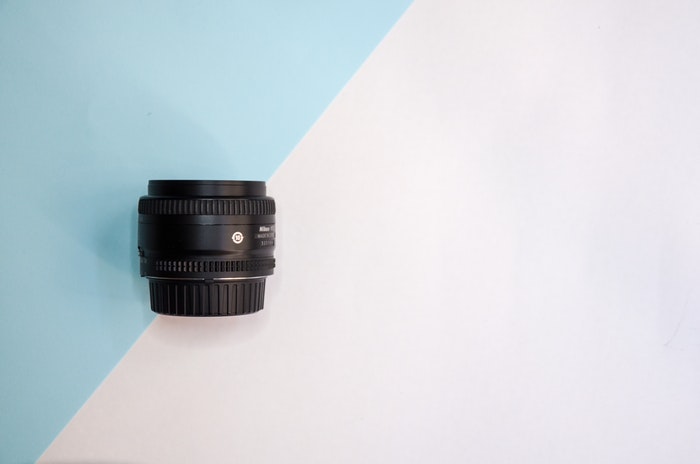
Photo by Ekrulila from Pexels
A zoom lens is a lens that covers a range of focal lengths. To start at the beginning, we need to understand what the focal length in photography is.
The focal length determines the angle of view of the camera, meaning how much of the scene you capture. It is measured in millimetres (mm).
Focal lengths usually range between 8mm to more than 300 mm.
Does it mean that the camera will capture just these distances? Luckily it doesn’t work like that because these are tiny distances!
This measure is just the distance between the center of the lens and the sensor. So it doesn’t correspond with how much of the scene the camera will be able to capture.
This might sound a bit confusing, so let me show you some examples.
A 50mm focal length (in a full frame camera) corresponds approximately to the angle of view of the human eye.
If we take a photo with a 50mm lens, the scene will look pretty much as we see it without the camera.
Shorter focal lengths will widen our angle of view. We will see a broader frame in the camera than with our eyes.
Lenses with longer focal lengths will narrow our angle of view. A smaller part of the scene will be in the frame.
Zoom lenses allow you to adjust the focal length of the lens within a specific range. In other words, you can change the angle of view and make it narrower (zoom in) or wider (zoom out).
This photo and the photo below were both taken from the same spot using the same 18-140mm lens.
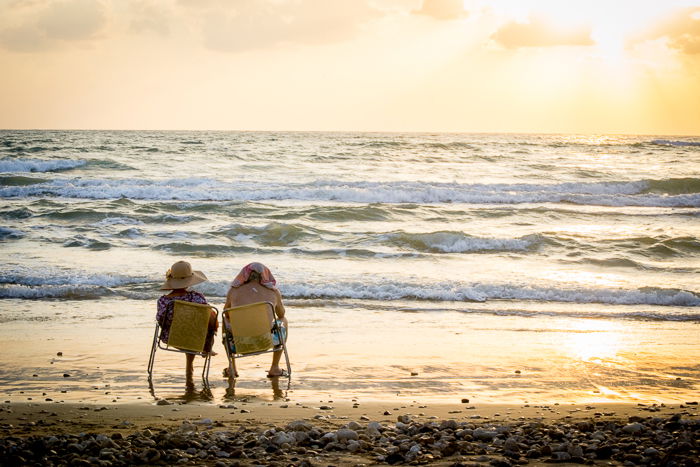

A zoom lens presents certain advantages and disadvantages in comparison to prime lenses (a lens with a fixed focal length).
The main advantage of a zoom lens is that you can change the angle of view quickly and without changing lenses.
This is great for photojournalism or event photography. You can adjust the focal length to the scene in front of you without the fuss of changing a lens.
Another great advantage of a zoom lens is that you won’t need to carry several prime lenses so that you can travel lighter. This is great if you are on the road and you plan to take different types of photos.
Zoom lenses do have some disadvantages compared to prime lenses that you should take into consideration.
A zoom lens is usually not as sharp as prime lenses. Another is that a zoom lens is slower. Because the maximum aperture of a zoom lens is narrower, it lets less light pass into the camera.
To compensate for that, you need to set the lower shutter speed, especially in poor light conditions such as indoor events. You can buy a fast zoom lens, but they are expensive.
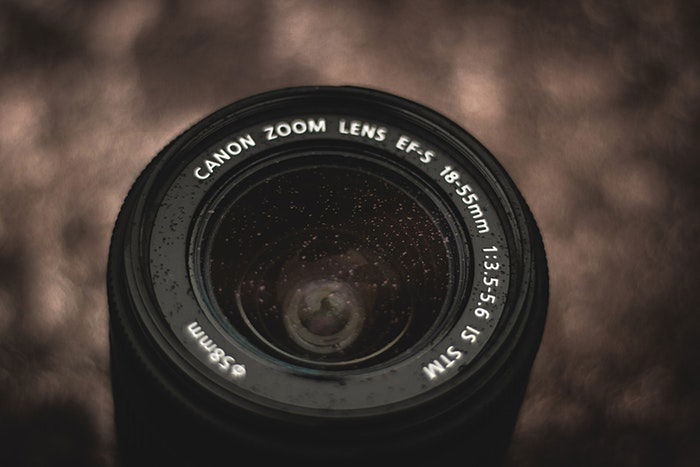
Photo by Pedro Sandrini from Pexels
There are different types of zoom lenses, and each type has specific characteristics. To understand the characteristics of a camera zoom lens, you should get familiar with the markings on it.
Zoom lenses have the focal length range and the maximum aperture inscribed on the base and front of the lens.
The details are short and abbreviated, like “18-140mm f/3.5”. In this example, 18-140mm is the focal length range and f/3.5 the maximum aperture the zoom lens can get.
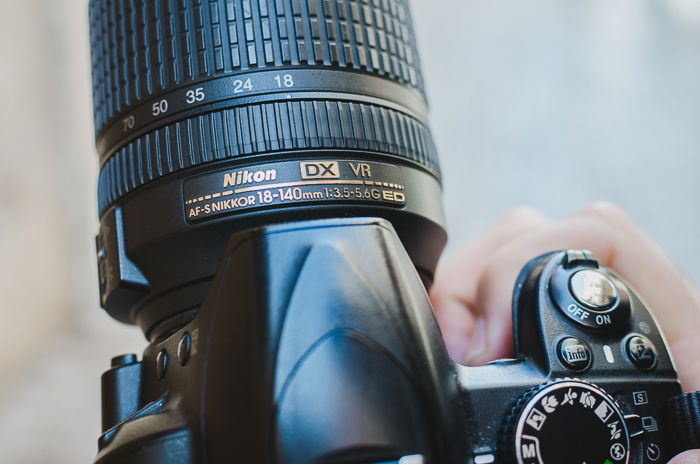
Lens details are written at its base
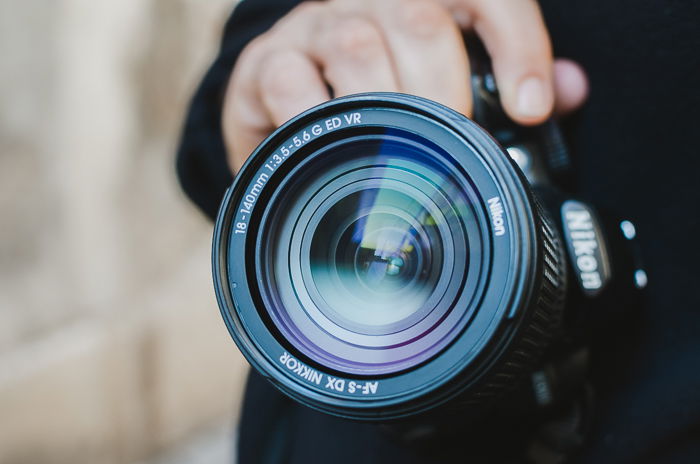
Lens details are written at its front
This classification is based on the maximum aperture value that the zoom lens has. A fast lens has a low f value as maximum aperture.
This type of lenses allows more light to get into the camera sensor so you can use faster shutter speed. This is why they are called fast lenses.
The maximum aperture is always under f/4. They are great for good image quality in low light situations, but they are usually more expensive.
The slow lenses are the ones with maximum aperture higher than f/4. They don’t let much light into the sensor. To get the same exposure, you need to use slower shutter speed.
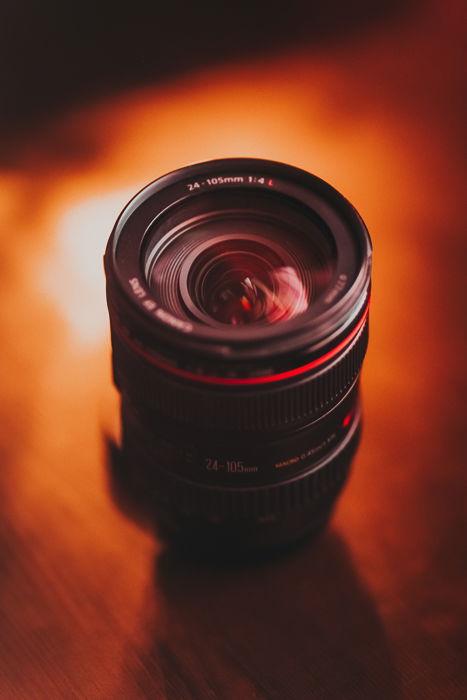
Photo taken by Matheus Bertelli published on Pexels
You can recognize if the lens has a constant (fixed) or variable aperture by checking its marking. A zoom lens with a variable aperture will have a marking of this type:
55-200mm 1:4-5.6G
In this case, the first aperture number (f/4) corresponds to the maximum aperture at the smaller focal length (55mm).
The second aperture number (f/5.6) corresponds to the maximum aperture at the biggest focal length (200mm).
In other words, the camera will progressively change its maximum aperture getting slower (allowing less light to go in) the more you zoom-in.
The markings of a constant aperture lens will look like this: 70-200mm f/2.8
These numbers tell you that in the whole range of the zoom (70-200mm), the lens can keep the aperture at f/2.8. This is something quite hard to get when manufacturing the lens, so they are usually more expensive.
As zoom lenses have a range of focal lengths, they can cover several focal lengths inside the same type.
So you can have a zoom wide-angle (i.e. 10-24mm) or a telephoto zoom lens (i.e. 200-500mm). Other zoom lenses cover from wide-angle to telephoto (i.e. 16-300).
Depending on the focal length, zoom lenses can be:
These lenses cover a big part of the scene because they have a short focal length (35mm or shorter). The 24mm or shorter lenses are ultra-wide. They are great for landscapes.
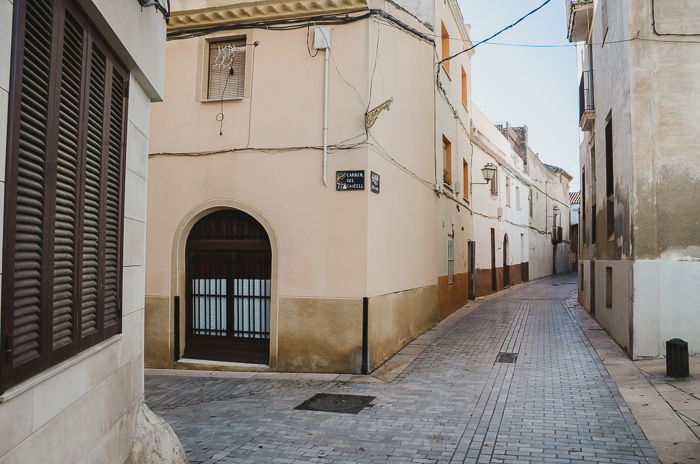
I set my lens on 18mm to get a wide-angle and capture the street corner and the intersecting alley.
With a focal length around 50mm, they are similar to the human vision. You can use them in many situations such as portraits, street photography and candid shots.
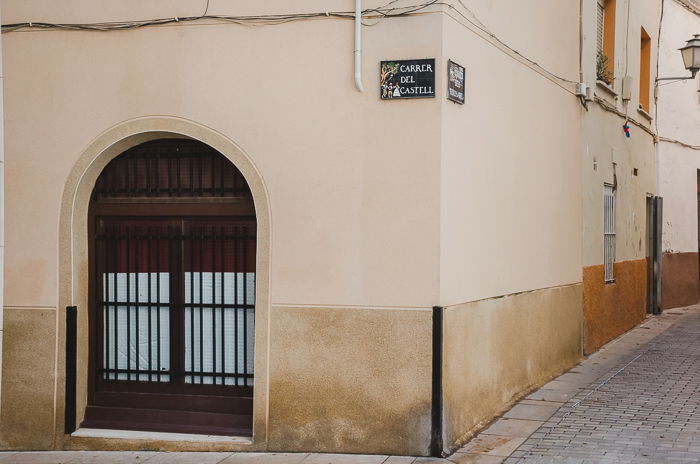
To capture the street corner I set my lens on 35mm
Photographers don’t agree on the threshold focal length value for a telephoto lens. Some consider anything longer than 60mm.
Others start regarding a lens as a telelens only if their focal length is above 85mm. Some even set the threshold at 135mm.
In general, telelenses cover a small part of the scene and they are great for taking high image quality photos of subjects that are far. For that reason, they are used a lot in wildlife photography and sports events.
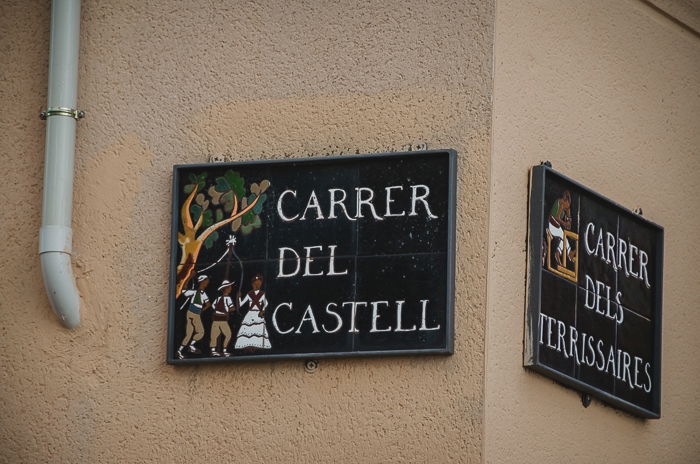
Instead of getting close to the wall, which would have also forced me to change my angle, I set my lens on 140mm to take a close up shot of this interesting street sign
There are so many zoom lenses in the market that choosing one can be a bit overwhelming. There are some steps you can follow to make the decision easier:
Focal length range usually depends on the type of photography you like. Portrait photographers usually stay in a range between 35mm and 200mm.
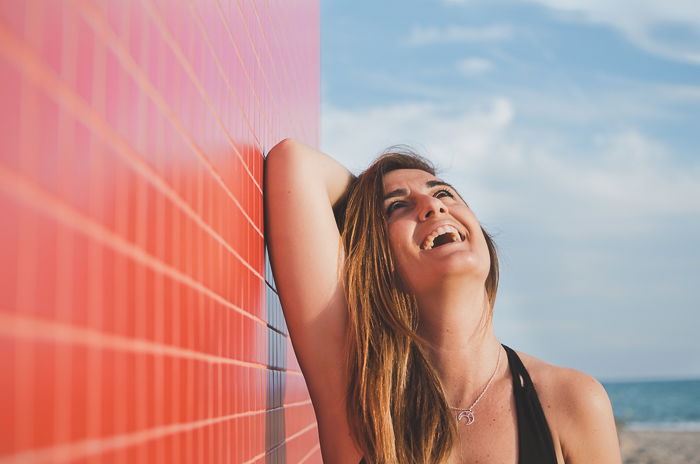
Landscape photographers range between 14mm and 35mm. Wildlife photographers use telelenses with more than 300mm. These can be a good starting point to choose.
Of course, there are exceptions. You might be a portrait photographer that loves shooting with wide-angle.
I recommend you to analyze the images in your library and check the focal length you use the most.
Do you want to keep shooting in the same angles you have been using until now? Pick a zoom lens in your usual range.
Do you want to experiment with new angles of view? Introduce new focal lengths into the zoom range.
I took this photo when I went to Dresden. Traveling, I couldn’t take many lenses with me, so having my 18-55mm zoom lens with me was very handy for both landscape and portraits.
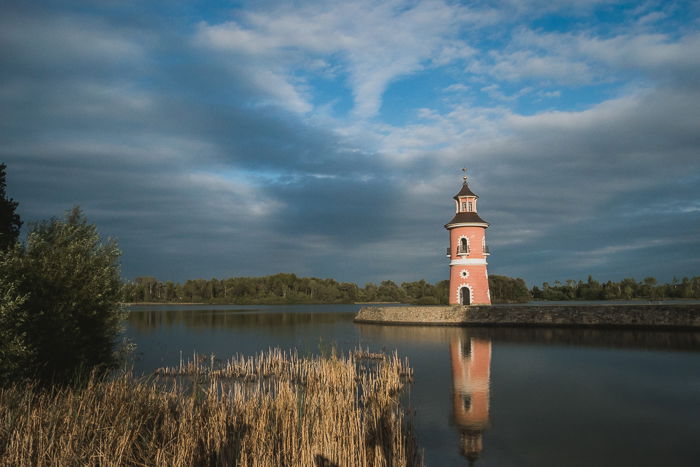
Zoom lenses are extremely useful when going hiking. I took this photo with a 55-300mm zoom lens, if I had to change lenses to take it I would have missed these beautiful guys.
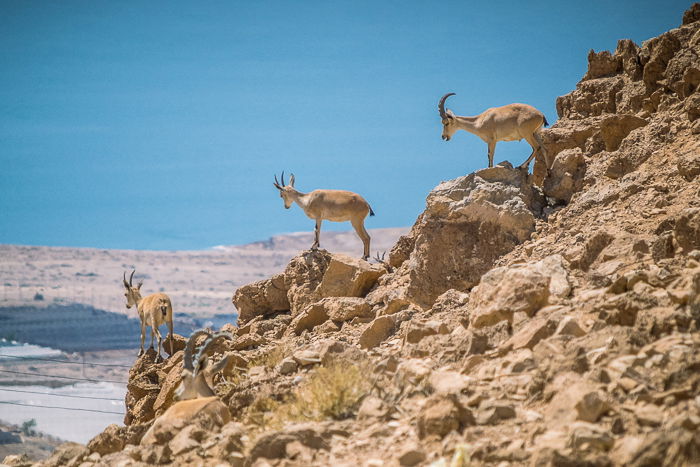
If your camera has a full frame sensor, you can skip this step. The angle of view of a particular focal length will be the same in the final image as indicated.
If you have a cropped sensor camera, the angle of view of a focal length will be smaller in the final image.
You need to add a conversion step to find the equivalent focal length for your final image. Multiply the focal length in the lens by the cropping factor of your camera.
Check the definitions of your camera to find the cropping factor.
For example, if your camera has a cropping factor of 1.5x and you are using a focal length of 50mm, you need to multiply 1.5 x 50mm= 85mm. So your final image will look as if you shot with an 85mm lens.
So when you are choosing a zoom lens, keep this in mind. Because if you get, for example, a 16-300mm lens, in your camera it will look like a 24-450mm.
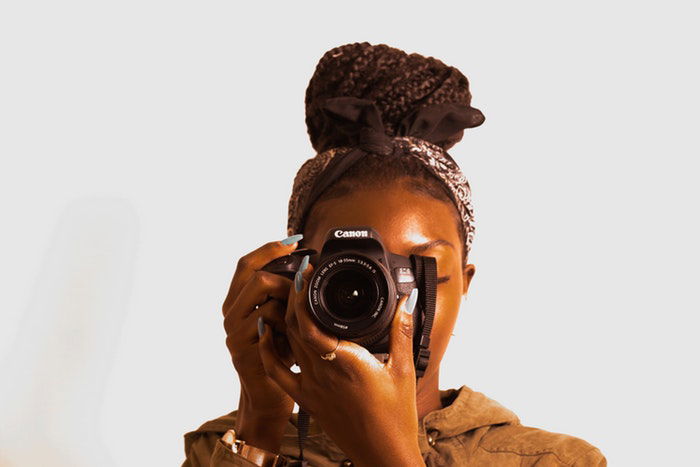
Photo by ATC Comm Photo from Pexels
Now that you know the range you want, it is time to decide on the aperture.
Do you want a slow or a fast lens? Fast lenses are useful in low light conditions because they allow more light to go into the camera.
They are also great if you need to blur the backgrounds. With their low aperture numbers, you can get narrow depths of field. But they are usually more expensive.
If you don't plan on taking photos in low light conditions or are not a fan of blurry backgrounds, a slow lens could answer your needs.
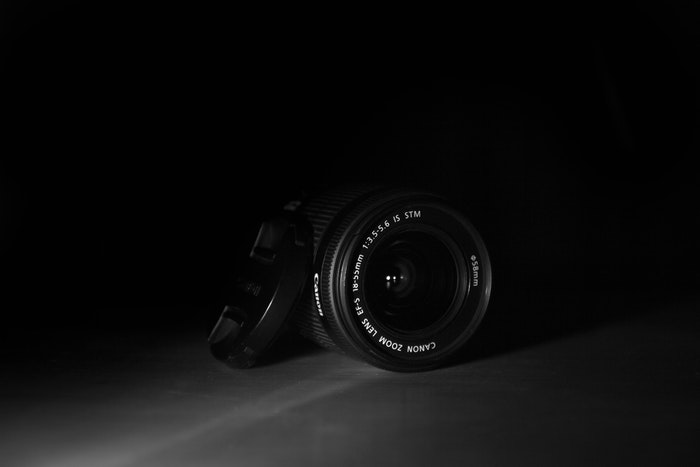
Photo by Vlad Bagacian from Pexels
Once you know the focal length, zoom range and aperture you would like to have, it is time to check what the market has to offer.
At this point, you should check your budget. Lenses are a real temptation for photographers, but they can be costly.
It is easy to end up spending much more than you have to. It is vital to set the limit of money you can invest in your lens.
If you have a budget to consider (as most of us do), you will need to make some compromises.
A way of saving money is to buy lenses from another brand instead than your camera brand. When choosing a brand, you need to make sure that the lens is compatible with your camera model. The image quality should also be good enough for your purpose.
You should check if the lens offers autofocus. To keep in your budget, you might need to concede the zoom range or the aperture values you wanted a bit.
Evaluate if making changes will be right for you or not. If you can’t change anything from your original decision, you have other options. You can wait until you save the money, buy second hand or rent the lens for the days you need it.

A zoom lens is an optical apparatus that contains several lenses and glass elements.
The focal point and angle of view can be adjusted within a given range. Zoom lenses offer the photographer high versatility without needing to change the lens.
Optical zoom is a technology that magnifies the size of an image without getting closer to the subject.
It is based on a system that changes the position of the lens in relation to the camera sensor to extend the focal length.
A camera lens works by converging light rays to one point of the camera sensor (the focal point) to create an image.
Lenses are built with the correct combination of several lenses. This combination helps to increase sharpness and avoid chromatic aberration.
Telephoto lenses are for any situation in which the subject of the image is far from the camera. Wildlife and sports photography are good examples.
They are also used to get blurry backgrounds and to avoid having the photographer’s shadow in the frame.
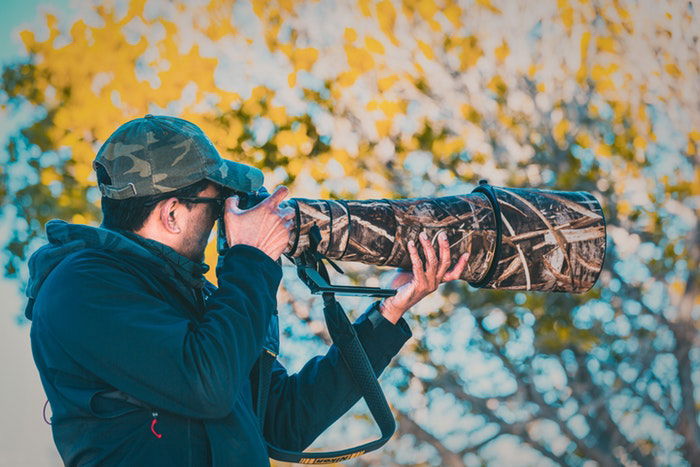
Photo by SenuScape from Pexels
There are a lot of zoom lens types in the market. To decide which one to buy, you need to consider your budget and the style of photography you like.
Zoom lenses are a great option when you need to change the focal length quickly or when you don’t want to carry a lot of weight.
Remember that a zoom lens also has disadvantages, especially in low lighting conditions.